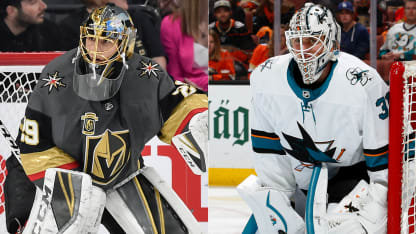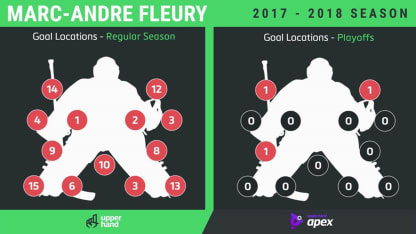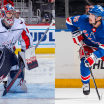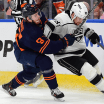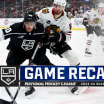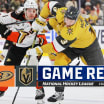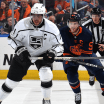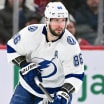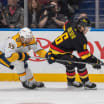Left to right: Most goalies move better in one direction, and Jones has traditionally been better going to his glove side. A lack of early rotation moving toward his blocker leaves him more likely to push across flat instead of back toward his post. The result is a chasing of plays and being stranded outside his crease. This tendency has happened a lot less often this season, and even when the Ducks scored on a left-to-right power play one-timer in Game 3, it took a perfect against-the-grain shot over his glove to beat Jones.
Against the grain: Jones' against-the-grain goals allowed were almost double the average, and two of the Ducks' four goals in the series were scored this way. Playing deeper can leave goalies flat, or parallel to, the goal line in their movements, with less rotation of the back shoulder as they move, which creates a little exposure on these types of shots back the other way.
Low blocker, not high glove: At times in the first round, the Ducks appeared to be targeting Jones' glove, and though his deeper positioning can leave space in the upper corners of the net, a tendency to pull back with his shoulders off the release makes it harder to reach shots just above the pad on the blocker side. Anaheim scored there from long range early in Game 2, and Jones' 23 mid- and high-blocker goals, and seven under that arm, are above the averages for the goalies tracked during this project.
Low-high: Jones gave up 23 goals on low-high plays that start from a bad angle or below the goal line this season, which was above the average (18.3 percent) but down from the 33 he allowed in the 2016-17 regular season. Two of the four Ducks goals in the first round came on this type of play, so it will be interesting to see if the Golden Knights attack from below the goal line with one-timers and quick shots, which accounted for 48 percent of the tracked goals on Jones this season.
